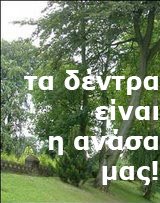Zeugma is an ancient city of Commagene; currently located in the Gaziantep Province of Turkey . It is a historical settlement which is considered among the four most important settlement areas under the reign of the kingdom of Commagene. It was named for the bridge of boats, or zeugma,(yoke) which crossed the Euphrates there.
The ancient city of Zeugma was originally founded, as a Greek settlement by Seleucus I Nicator, one of the generals of the Alexander the Great, in 300 BC. King Seleucus almost certainly named the city Seleucia after himself; whether this city is, or can be, the city known as Seleucia on the Euphrates or Seleucia at the Zeugma is disputed. The population in the city was approximately 80,000.
In 64 BC Zeugma was conquered and ruled by the Roman Empire and with this shift the name of the city was changed into Zeugma, meaning "bridge-passage" or "bridge of boats". During the Roman rule, the city became one of the attractions in the region, due to its commercial potential originating from its geo-strategic location because the city was on the Silk Road connecting Antioch to China with a quay or pontoon bridge across the river Euphrates.
In the summer of 2000, one of the great frontier cities of the Roman Empire, the city of Zeugma, all but disappeared from the face of the Earth under the flood waters of a dam. In a bid to modernise, the Turkish government has embarked on one of the most ambitious engineering projects in the world, building a series of dams on the Euphrates over the past twenty years. Almost every dam threatens ancient remains that lie below in one of the most archaeologically rich regions of the world. The completion of the Birecik dam, featured in this film, has flooded the valley where Zeugma is buried. The city on the flat plain has entirely disappeared and the waters have now risen to cover 30% of the city on the hillside.
'Horizon' tells the story of the archaeologists' fifth and final visit, struggling to save what they could before the dam waters rose. It witnesses the uncovering of some of the most beautiful examples of Roman art ever found. The team’s discoveries at Zeugma caused an international outcry and further excavations were hurriedly put together.
The dam will not only erase much of Zeugma from history. It will also displace 30,000 people, mostly Kurds, from the villages they have lived in for generations. For many, the loss of Zeugma is a tragedy.(BBC)
Η Ζεύγμα, θυσία στο βωμό της ανάπτυξης
 Μάχη με το χρόνο έδωσαν οι αρχαιολόγοι που βρέθηκαν στην αρχαία πόλη Ζεύγμα, προσπαθώντας να σώσουν όσες περισσότερες αρχαιότητες μπορούσαν, πριν αυτές κατακλυστούν για πάντα από τα νερά του φράγματος Μπιρετσίκ, στα νοτιοανατολικά της Τουρκίας.Η Ζεύγμα ιδρύθηκε γύρω στο 3000 π.Χ. από Έλληνες και αργότερα έγινε το αρχηγείο της Ρωμαϊκής Λεγεώνας. Μέχρι και το Μεσαίωνα ήταν μια πόλη εύπορη και πολλοί αρχαιολόγοι τη συνέκριναν με την Πομπηία Η στρατηγική της θέση κοντά στον Ευφράτη ήταν η κύρια πηγή ανάπτυξής της.(in.gr)
Μάχη με το χρόνο έδωσαν οι αρχαιολόγοι που βρέθηκαν στην αρχαία πόλη Ζεύγμα, προσπαθώντας να σώσουν όσες περισσότερες αρχαιότητες μπορούσαν, πριν αυτές κατακλυστούν για πάντα από τα νερά του φράγματος Μπιρετσίκ, στα νοτιοανατολικά της Τουρκίας.Η Ζεύγμα ιδρύθηκε γύρω στο 3000 π.Χ. από Έλληνες και αργότερα έγινε το αρχηγείο της Ρωμαϊκής Λεγεώνας. Μέχρι και το Μεσαίωνα ήταν μια πόλη εύπορη και πολλοί αρχαιολόγοι τη συνέκριναν με την Πομπηία Η στρατηγική της θέση κοντά στον Ευφράτη ήταν η κύρια πηγή ανάπτυξής της.(in.gr)






1 comment:
Παρά την κατακραυγή των αρχαιολόγων σε τουρκικά και διεθνή μέσα ενημέρωσης το 80% του χώρου στη Ζεύγμα βυθίστηκε στα νερά της τεχνητής λίμνης. Χαρακτηριστικό είναι ότι την θέση Ντομούζ Τεπέ μια εκκλησία, που οι ντόπιοι τη λένε Hidiriliyas Kilisesi, βυθίστηκε ολόκληρη στα νερά του φράγματος. Μόνο ο τρούλος της βρίσκεται έξω από το νερό. Πρόκειται για το ναό του Αγίου Σέργιου.
Η πόλη Ζεύγμα χάθηκε από το προσκήνιο ύστερα από 937 χρόνια πλούσιας ιστορίας. Όμως πριν συμβεί ο καταποντισμός έδρασαν οι κάθε είδους αρχαιοκάπηλοι. Η εφημερίδα «Χουριέτ» έγραψε πως η περιοχή λεηλατήθηκε στις αρχές του 20ού αιώνα από το Βρετανό κατάσκοπο Τόμας Εντουαρντ Λόρενς, που έμεινε γνωστός στην ιστορία ως ο Λόρενς της Αραβίας. Ο πρώην διευθυντής του Αρχαιολογικού Μουσείου της πόλης Γκαζίαντεπ, Ριφάτ Εργκετς, υποστηρίζει ότι ο Λόρενς της Αραβίας, έχει εξασφαλίσει αρχαιότητες για τον εαυτό του αλλά και για το Βρετανικό Μουσείο. Κάτοικοι μεγάλης ηλικίας της περιοχής θυμούνται τον Λόρενς της Αραβίας, όταν είχε μεταβεί το 1917-1918 στη συγκεκριμένη περιοχή με τη μοτοσικλέτα του, η οποία σήμερα εκτίθεται στο Αρχαιολογικό Μουσείο του Γκαζίαντεπ.
. Τώρα χάθηκαν οι μεγαλύτερες αρχαιολογικές ανακαλύψεις του 20ου αιώνα πριν προλάβουν οι αρχαιολόγοι να ολοκληρώσουν τη διάσωση των ανεκτίμητων θησαυρών της περιοχής. Είχαν επιδοθεί σ’ ένα αγώνα ενάντια στο χρόνο. Και στις περισσότερες περιπτώσεις αναγκάσθηκαν να σκάβουν σωστικά αντί να κάνουν επιστημονικές ανασκαφές. Το φράγμα Μπιρέτζικ κάλυψε σιγά- σιγά με τα νερά ότι βρέθηκε μπροστά του. Η ενεργειακή πολιτική εναντίον της πολιτιστικής κληρονομιάς.
Rodosport.gr
Post a Comment